Heading out the door? Read this article on the new Outside+ app available now on iOS devices for members! Download the app.
Unlike traditional tube-style devices, assisted-braking belay devices actually help the belayer hold a falling or hanging climber. Assisted-braking belay devices either use moving parts (e.g., Petzl Grigri ) or the geometry of the device (e.g., Ocún Bow) to apply braking force to a rope. This helps the belayer prevent fatigue while holding a climber hanging for the 37th time on their project. These devices also give you supreme control when lowering. When used properly, they can provide an extra margin of belaying safety.
Since Petzl introduced the Grigri in 1992, many new assisted-braking devices have been developed over the years. These devices generally range in cost from $39.95 to $149.95. They can be used in gyms and the alpine alike. Many gyms even require use of a brake-assisted belay device these days.
To help you choose the best assisted-braking belay device for you, we’ve rounded up a number of options, each of which has its pros and cons. We looked at everything from weight and price to how well the device feeds slack.
Watch gear tester Matt Samet compare the Edelrid Pinch, Ocun Bow, and Petzl Neox in action
Whichever device you choose, it’s critically important to learn proper techniques for each device—they vary widely. Otherwise, you won’t be able to feed slack quickly to a desperate leader, and you may even endanger your partner. Because of this learning curve, we recommend most climbers choose one assisted-braking device and stick with it. Of course, no device is completely foolproof. The most important aspect of belaying with any device is paying close attention to your partner.
Assisted-Braking Belay Devices
Time-tested Workhorse: Petzl Grigri
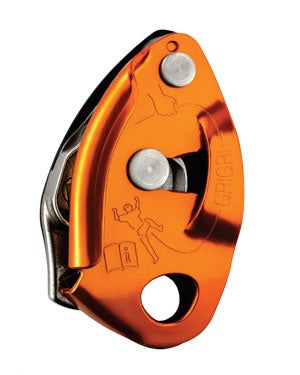
$99.95
Rope compatibility: 8.5mm-11mm ropes
Weight: 6.17 oz.
Used for everything from extended sport belays to jumar back-ups, the Grigri dominates the assisted-braking belay device market. It makes feeding slack and lowering smooth and easy. For all rope sizes we’ve used it with, minimal unwanted locking occurs. While the Grigri still stands as a commonly used classic, Petzl’s successor, the Neox, improves upon a few operating aspects—but with a higher price tag (more on that below).
Smoothest Operator: Petzl Neox

$149.95
Rope compatibility: 8.5mm-11mm
Weight: 8.3 oz.
By running the rope over a rotating internal wheel to hasten slack payout and taking in rope, the Petzl Neox earns its chops as one of the quickest assisted-braking devices out there. Essentially, it feeds cord as smoothly as a tube-style device, but then cams down on the rope like a Grigri. The wheel stops spinning when the rope is weighted or in a fall. Bigger than a Grigri, the Neox weighs a good 2 ounces more than the Grigri’s 6.2 oz. It also pushes the upper envelope for price at $149.95. That’s $50 more than the Grigri. But for serious craggers, the extra weight and expense are well worth it to have one of the best, fastest-feeding devices on the market.
Best for Guides and Instructors: Black Diamond ATC-Pilot
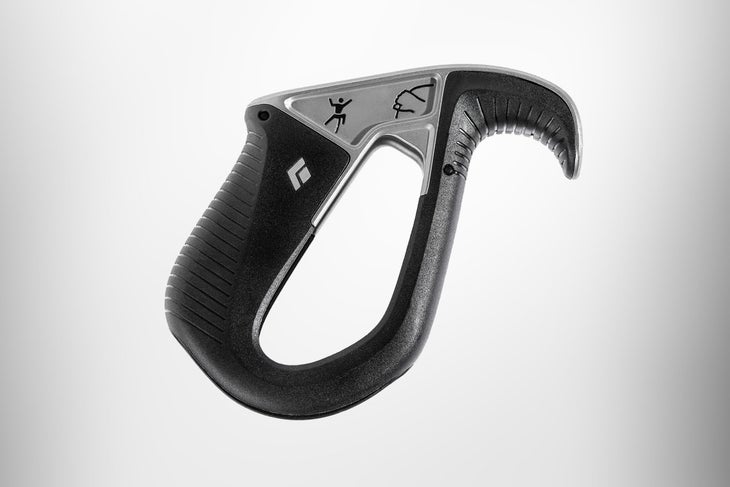
$54.95
Rope compatibility: 8.7mm-10.5mm
Weight: 3 oz.
Though it only has a single rope channel—unlike the original, multi-pitch-suitable ATC—the ATC-Pilot is a great gym and cragging device. It offers intuitive brake-assisted belaying in a small, ultra-lightweight package. This streamlined device doesn’t have any cams or moving parts. The rope simply pinches between the steel braking zone and your locking carabiner to arrest a fall or hold a hanging climber. To feed slack, you tug up on the “horn” with your thumb. This makes the ATC-Pilot relatively accessible for newer belayers. Combined with the roomy rope channel, the ATC-Pilot is a good choice for toproping, teaching, and guiding. We also like it for the gym, where you’re often switching back and forth between topropes and lead belaying on fuzzed-out cords.
A Minimalist’s Dream: Edelrid Pinch
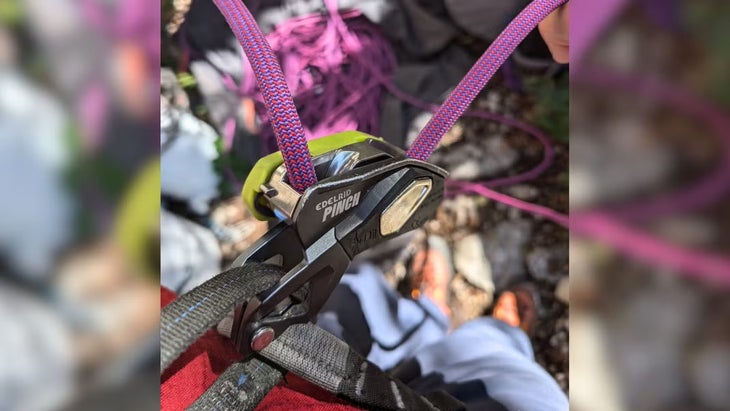
$119.95
Rope compatibility: 8.5mm-10.5mm
Weight: 8.2 oz.
To date, the innovative Edelrid Pinch is the only belay device—of any type—that doesn’t need a locking carabiner to attach to your belay loop or a masterpoint. You simply drop the rope in the channel click and then click the Pinch shut around your belay loop. Not needing a locker means one less thing to bring to the crag. It also keeps the device closer to your body and better oriented. It also allows you to whip out a few extra inches of slack on rapid-fire clips. The Pinch works best on thinner cords, with notable resistance on ropes above 9.4mm, though it’s excellent at avoiding kinks thanks to its V-shaped rope groove. It also comes with an anti-panic lowering feature (that you can disable). You can use the Pinch in four different orientations for “guide-mode” belaying on multi-pitch climbs.
Best for Rappelling, Canyoneering, and Rescue Work: Mad Rock Safeguard
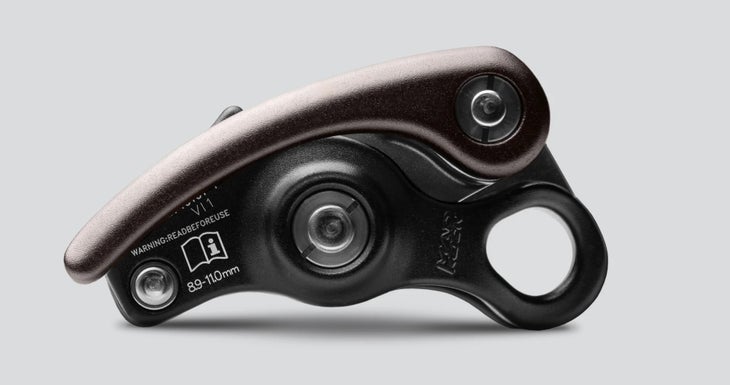
$99
Rope compatibility: 8.9mm-11mm
Weight: 5.4 oz.
The Mad Rock Safeguard is a new iteration of their compact assisted-braking device the Lifeguard. The Safeguard uses the same hot-forged aluminum (device body) and stainless-steel (cam) design, but eliminates the Lifeguard’s internal cam spring. This lets the Lifeguard automatically snap shut, but also allows a small amount of rope to walk through. These design tweaks lead to a more dynamic catch. The Safeguard’s resultant reduction in rope creep/slippage makes it better suited to rope-access, guiding, rappel, canyoneering, and rescue work, though it’s still a great single-pitch cragging device. The release handle on the Safeguard is notably ergonomic, making for smooth lowers.
Lightest (and Most Affordable): Ocun Bow
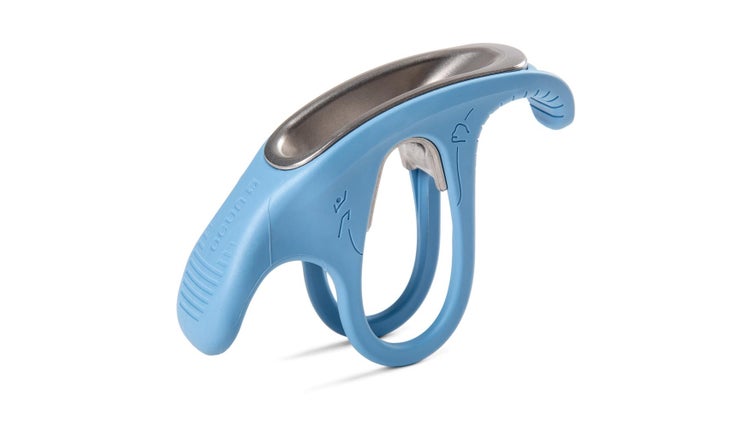
$39.95
Rope compatibility: 8.5mm-11mm
Weight: 2.5 oz.
The space-age, visibly ergonomic Ocún Bow functions much like the ATC-Pilot. This tube-style device pinches the rope between your locking carabiner and the belay area in a fall or when the rope is weighted. Notably, the Bow is also reversible, with a slack-feeding horn on each side. This makes it a good pick for left-handed belayers. The Bow creates reassuring friction in the system that’s great for hangdog sessions, but can be a bit “bindy” with fat or fuzzy cords when paying out slack for fast-clipping leaders. Still, you can whip out cord with newer or skinnier ropes. And the Bow might have some of the smoothest, easiest-to-control lowering of any tube-style device on the market. You can quite easily use the horn to tweak the angle, and hence rate of descent.
Most Ergonomic (and Best Colors): Beal Birdie
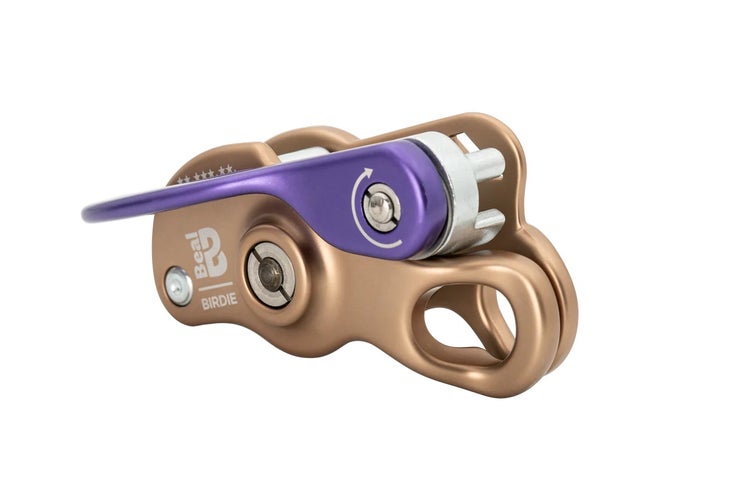
$82.95
Rope compatibility: 8.5mm-10.5mm
Weight: 7.4 oz.
The Beal Birdie relies on a spring-tensioned cam just like the Grigri, but in a slightly smaller package with all-metal components. All that metal lends it a reassuring heft in hand given its compact size. We like the nicely contoured handle and smooth rope-bearing surfaces that make for buttery lowering and quick slack-feeding. One thing to note: For single-rope rappelling, the device can heat up and the handle can feel a bit “short.” This can result in jerky action on a fixed line or while simul-rapping. Still, the Birdie comes at a very attractive price point for a cam-activated assisted-braking device and has proven itself hard-wearing.
Most Intuitive: Trango Vergo
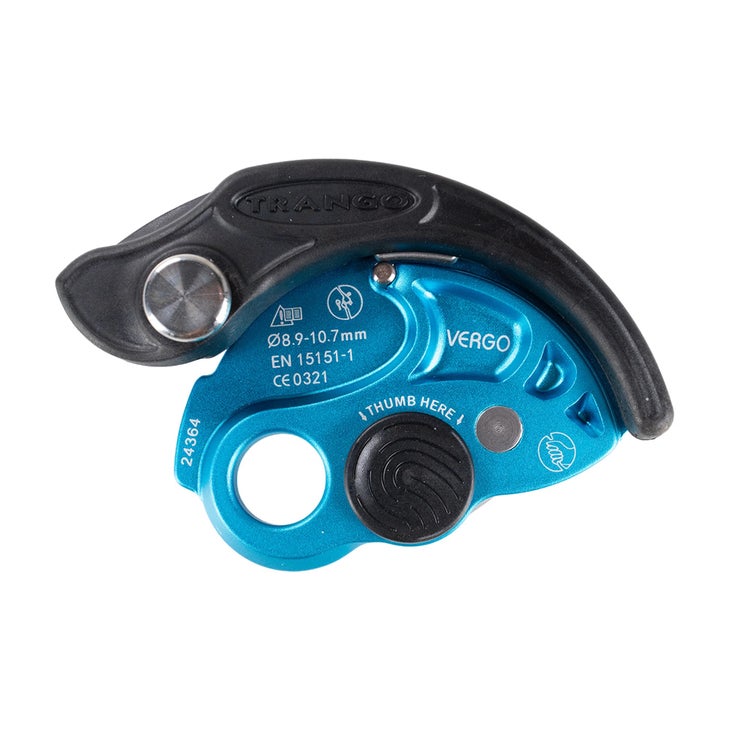
$99.95
Rope compatibility: 8.9mm-10.7mm
Weight: 6.9 oz.
For belayers new to assisted-braking devices, the compact, affordable, and intuitive Trango Vergo is a great start. Unlike similar devices, when feeding slack, there’s no need to override the cam with your thumb while keeping the brake hand on. The Vergo simply feeds rope through a relatively straight channel, letting you reel slack through with your guide hand. In a fall, the device rotates around your locking carabiner’s basket to create holding power, versus relying on an internal cam. You do need to pay out slack more horizontally—to the side of the device—than vertically. The Vergo also locks up quickly, requiring an attentive belay to keep the system dynamic. This extra friction means also means it can be a bear to pull rope through on a toprope.
Best for Left-Handed Belayers: Wild Country Revo
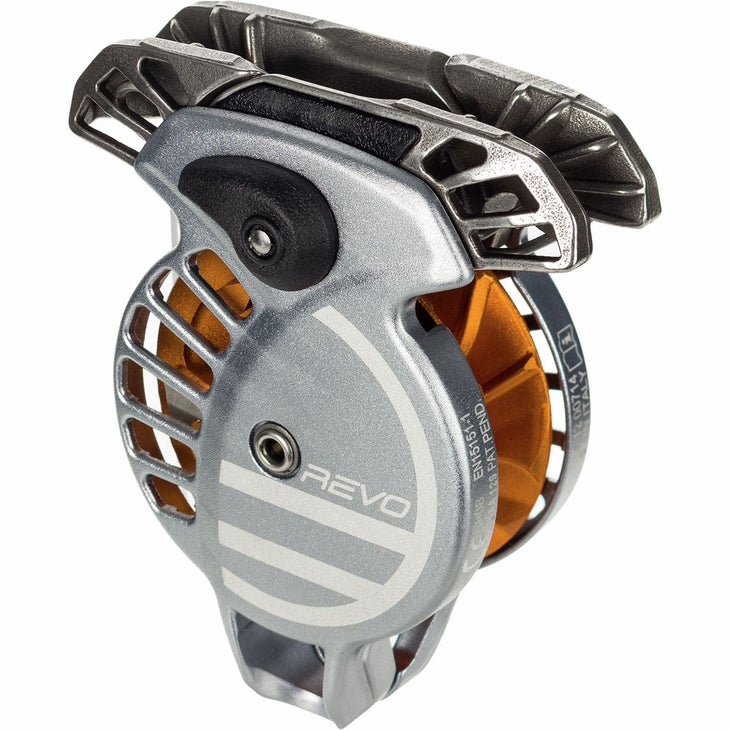
$144.95
Rope compatibility: 8.5mm-11mm
Weight: 10 oz.
The Wild Country Revo works through a unique mechanism that Wild Country bills as “panic proof.” This mechanism consists of an internal wheel that locks up once it exceeds a velocity of four meters per second, as it would with a whipper. This feature makes the Revo a great device for teaching newer climbers. Another noteworthy aspect of the Revo? It’s truly ambidextrous, or bidirectional. The wheel works no matter which way it’s rotating, so lefties can belay without special accommodations. Thanks to the wheel’s action, the Revo also feeds as smoothly as any tube-style device. This makes it a great choice for redpoint belays. The one caveat is that with long working sessions, you don’t get the “leg up” (er, “arm up”) that you would with a brake assist in terms of enhanced static holding power.
Most Similar to ATC: Climbing Technology Click Up
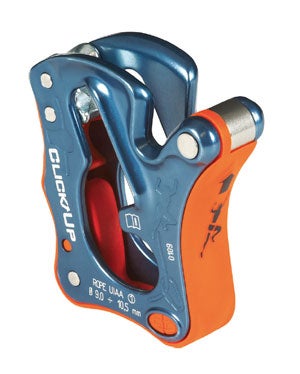
$59.95
Rope compatibility: 8.6mm-10.5mm ropes
Weight: 4 oz.
Made by the Italian company Climbing Technology, the Click Up has a minimal following in the U.S. In many ways, it behaves like a tube-style device. You load the rope in a similar way, and lock off with your brake hand just as you would with an ATC. However, in a fall, your belay carabiner “clicks up” inside the device to apply more braking force. This allows you to hold a falling or hanging climber with minimal effort. To lower, you press out on the device’s body and pay out slack with your brake hand.
